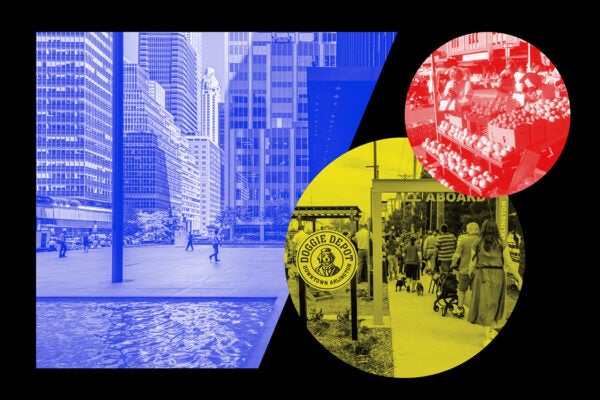In January 1904, Dorothy Stanhope introduced readers of the New York Times to jai alai, “Havana’s Favorite Recreation.”
“The game resembles handball,” Stanhope writes, though rather than using bare hands, players strap “long, narrow, curved baskets” to their wrists, to be “used as a kind of racquet.” The point of the game
is to keep in motion the one ball used. Instead of sending it from one player to another, it is sent against a wall at one end of the court. As it rebounds the opponent catches it in his basket, to which it seems to go as if by magic, sending it back to the wall, &c.
While Stanhope describes the game play, her true focus is a discussion of how the house manages bets on the games—the main purpose of the contest for the spectators who gathered at the arena, or fronton, as it’s more accurately called.
“One can imagine going to a horse race without placing money on a favorite or to a baseball game without making wagers,” she writes, “but at Jai Alai betting is the order of the day.”
She also states that games may be “sold” (as in, the players could be bribed to produce a certain result).
By the 1920s, Americans would have been more familiar with the game, as frontons were built in a number of cities, offering people the chance to see, and bet on, jai alai. Its arrival in the US as a gambling proposition allowed the game to retain an odd position relative to other sports. In many states, jai alai sat alongside government lotteries, horse racing, and greyhounds as a legal option for gambling (even when betting on football or boxing remained illegal).
In 1949, the Raiford Record, a magazine for men incarcerated in the Florida State Prison, carried a detailed article about the “man-killing Basque game” and its origins.
“Jai alai is fundamentally one of the simplest of games, as well as one of the most exciting and dangerous,” wrote the editors. The sport’s incredible speed (balls in play have been recorded at speeds of more than 300 mph) makes it a thrilling game, as well as risky for players. As the Raiford Record describes, “Danger rides on the winging flight of the pelota [ball].” This is part of the reason jai alai was, and remains, primarily a spectator rather than a participant sport.
Jai alai is also distinctive as an export from Spain (even as the most popular games played in Spanish-speaking countries today come from elsewhere). Indeed, Salvador Giner in his survey of the “Spanish cultural transition” that has paralleled Spain’s passage from dictatorship to democracy, notes that Basque pelota, or jai alai, is unique among traditional sports of the Iberian peninsula, having transcended national borders.
Weekly Newsletter
Jai alai’s popularity in the US has declined, and over the decades, frontons have been turned into raquetball courts. The game held on only in Miami with its large Latino community. Nonetheless, a study of the market of gambling by the late 1990s showed jai alai was still in the mix, despite the small number of venues, with a gross revenue of 54 million. With the loosening of restrictions on sports gambling in the US, jai alai is no longer “needed” as a betting option, but it retains its popularity among devotees.
Meanwhile, back in the Basque region, pelota has become even more strongly associated with Basque identity and language, a counterpoint to “Spanish” culture, particularly in rural areas.







